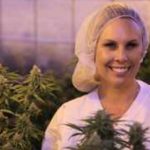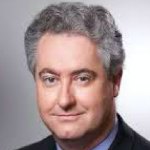Why the Greatest Medicinal Plant is Outlawed: An Interview With HEMP’s Dr John Jiggens

As Australian historian Dr John Jiggens puts it, cannabis is the “greatest herbal medicinal plant on the planet”. It can be used to treat more conditions than any other medicine. There’s no risk of overdose. And early last century, it was one of the most widely used medicines in the country.
In 1925, the League of Nations was considering whether to add cannabis, as a last minute addition, to the transnational drug control treaty known as the Geneva Convention, which was about to ban the recreational use of opium and the coca plant.
The Australian prime minister’s office contacted the nation’s first health director general Dr John Howard Lidgett Cumpston to see what he thought of the proposal. The doctor responded that there was no reason to add the plant to the ban on habit-forming drugs.
Indeed, prior to a concerted effort to target the plant for banning in the late 1930s, Australians could not only purchase cannabis medicines over-the-counter at the chemist, but cannabis cigarettes – such as Joy’s and Cannadonna – were sold for medicinal use with the director general’s approval.
Legal, but inaccessible
After a heavy dose of “reefer madness” propaganda and the demonisation of the weed, mainstream Australian society lost all knowledge that this illicit substance, which could get you locked up or send you “mad”, had quite a plethora of positive uses.
However, these days, the majority are once more aware of the benefits of this plant, due to the tireless campaigning of cannabis activists – like Dr Andrew Katelaris and Michael Balderstone – who’ve driven the point home.
And this rising acknowledgement of the ability cannabis has to heal sick Australians, led the Turnbull government to pass legislation that was supposed to create a legal supply chain, so the estimated 100,000 patients currently sourcing it on the black market could access it via a doctor.
But, it did nothing of the sort. Instead, it set up a system where the overwhelming majority of patients cannot get a script, and if they can, most are forced to pay crippling prices for imported medicines produced from a plant that a novice can successfully grow in their backyard for free.
Vote HEMP
In 2004, Dr Jiggens published Marijuana Australiana: Cannabis Use, Popular Culture and the Americanisation of Drugs Policy in Australia. The book tracks the Australian outlawing of a once commonly used medication on the impetus of some carefully placed US propaganda.
While, today, Dr Jiggens is running for the Senate on the HEMP ticket in Queensland in next week’s federal election. The Help End Marijuana Prohibition Party has been loudly advocating for cannabis legalisation since 1993.
Sydney Criminal Lawyers spoke to Dr John Jiggens about why such a beneficial plant was criminalised, how its use was rediscovered in the 1960s, and the great price that society has paid due to the misguided policy of cannabis prohibition.
Firstly, Dr Jiggens, why has the cannabis plant been such a focus in your life? And why are you running in the federal election on its behalf?
I’ve always liked cannabis. That’s what got me interested in it. It also has the most fascinating history of all.
When I was an academic, I was a member of the Alcohol and Drugs History Society. And I’ve always been interested in the history of drugs, particularly entheogenic plants. They’re fascinating histories. And what they do is fascinating.
I started off studying psychology in the late 1960s, when acid was around. And a few acid trips make you very intrigued about the chemical basis of the mind and being.
I’ve used illicit drugs all my life. And I’ve known people who have used them. Trying to solve it through prohibition is the wrong way. And it, absolutely, makes the problems worse.
People should point out that drugs are often not the things that they are demonised to be. There are often useful things you can learn from them. The best way to handle those situations is not to demonise drugs. And not to demonise the people who use them.
Prior to the end of the 1930s in Australia, what role did cannabis play in the local community?
Cannabis was widely used as a medicine. People probably didn’t even realise they were using it. At that stage, medicines at chemists were dominated by proprietary medicines. Of those, quite a few used cannabis, opium and alcohol. They were the main drugs used.
The most popular medicine at the time was called Dr J Collis Browne’s Chlorodyne. I always smack my lips when I recite its formula. It was six grams of Nepalese hash dissolved in chloroform and fortified with opium.
It was the most popular medicine in the British Empire. It was advertised for all these different things it could treat you for. And when you consider you’re combining the medicinal powers of cannabis, with the medicinal powers of opium, that means you can cover a huge number of illnesses.
It’s probably the closest formula you’ll get for a panacea: a combination of cannabis and opium.
People didn’t know they were taking them, but that’s what medicines were based on. And they were very popular.
As you’ve documented, in 1938, two articles about cannabis appeared within seven weeks of each other in an Australian newspaper called Smith’s Weekly.
The first warned of a new Mexican drug called marijuana that turns people into sex maniacs. The second explained that the drug had recently been smoked at parties in Sydney and warned that more could be on its way.
What was behind these reports? And what sort of an overall effect did they have in this country?
The first effect they had was they popularised the use of the word “marijuana”. They use it to rename Cannabis indica, which was what the drug was called in Australia.
There had been no problems with it in this country. It was one of the most widely used drugs. It would probably vie with opium. But, the banning of it was based on saying that it was this new drug that maddens victims into taking part in the most depraved orgies.
The articles caused the banning of cannabis. But, with this banning, there were a number of steps. It got Cannabis sativa to be declared a noxious plant in NSW and Queensland. It became a crime to grow it.
But, it didn’t affect cannabis medicines until the 1950s. Cannabis medicines held in there, because the people in charge of the health department knew it was bullshit. And they understood that cannabis had been used for 50 years in Australia without any serious effects.
Although, it was actually a bit longer, about 70 or 80 years.
The health professionals knew there had been long-term use of cannabis. And they knew it didn’t cause the problems the newspapers were saying. Cannabis medicine held on for a fair while.
What happened was it was all part of the plan of the American Bureau of Narcotics – and in particular Harry Anslinger, the head of the department – to extend cannabis prohibition. Anslinger was building this police empire based on prohibition, especially cannabis prohibition.
And that’s what he did. He demonised the drug. He demonised the people who used it. He put sensational stories in the press throughout the world, because he was aiming for what he eventually achieved: The Single Convention on Narcotic Drugs of 1961.
That was still 23 years down the track. But, he stayed at the Bureau of Narcotics from 1930 until 1963. He was there forever. And he built a bureaucratic empire based on handling drug problems by locking people up and criminalising them.
The long-term effect was we moved from a health policy based on medical information to a drugs policy based on policing, courts and prisons.
So, by the 1960s, cannabis medicines had been phased out and states had enacted laws to prohibit the plant.
But, in 1964, a large infestation of wild cannabis was found growing along the Hunter River in NSW. What happened following this discovery?
Well, there was a boom in cannabis supply in Australia. One of the reasons why people weren’t using cannabis was because there was none to use. But, at that stage, suddenly, it was discovered that there were large cannabis crops growing in the Hunter Valley.
In cannabis folklore, you have these groups of people known as the Weed Raiders. They would go to the Hunter in search of the wild cannabis plants. And the newspapers were very helpful in spreading how the plant simply needed to be dried, then the leaves and flowers could be smoked.
The media always play a double role. They sell newspapers based on telling stories about illicit pleasures. But, then they always end by condemning them. So, they do both: they titillate you and then condemn drug users – that’s the formula they use.
People got this information. Bob Dylan was just about to release “Everybody Must Get Stoned”. And the Beatles were certainly turning on. There were lots of songs about getting high coming out. People were very interested in cannabis as a drug.
And this was the start of the cannabis legalisation movement. In 1967, there was a big cannabis legalisation march in London. And people like the Beatles were sponsors of it. So, the younger generations, particularly musicians were taking up the cause of cannabis.
To that extent, cannabis became available in Australia. But, then in 1967, the rest and recreation tours of Sydney by US serviceman began. And they were very high drug takers and they came in bringing some of the best pot in the world: Vietnamese pot, Thai pot and Thai buddha sticks.
Southeast Asia was one area where cannabis use was still part of the popular culture.
You also point out in your book that in 1976, Australian authorities launched the war on drugs, which initially began with police raiding hippie colonies in Queensland’s Cedar Bay and around Nimbin in NSW.
And you assert this new policy had nothing to do with keeping people safe from harmful drugs, rather it was politically motivated. Can you talk on that?
It’s the politicisation of it, which started with Richard Nixon. People like Joh Bjelke-Petersen and Sir Robin Askin were Nixonites. They just copied what the US Republican Party did. It’s like what the Liberal Party and the Nationals still do today. They just ape Republican Party policies.
Nixon had a big victory in 1968. And it was based on this incredible division that had happened in American society over the Vietnam War: people who were opposing the war and those who were pushing it.
The people who opposed the war were nearly all pot smokers, so it was very easy to indirectly attack them via attacking pot. It’s was the start of what we call the culture wars now. But, the culture wars back then were very much centred around cannabis use.
And the same thing happened in Australia. It happened in ’76, because the hippie movement was then in its back to the land phase: going to out of the way places, setting up hippie communes, growing pot, walking around naked and being vegetarians.
They were doing all those things that hippies liked to do back then. And they were easy to victimise. They were the other side of the cultural war. They were into things like ecology, which was a new word then. And they were into things like protecting the rainforest. And people thought it was mad.
The mainstream community thought it was mad to defend rainforests and to defend trees because they do useful things for the planet. They couldn’t understand it.
It’s at those times that you do get shifts in paradigms throughout history. You get early up takers of such ideas. And the hippies took up a whole series of ideas, which are now mainstream, such as ecology, environmentalism, eastern religion, as in yoga.
And if you took up these forward, progressive ideas, you did not take up with the Liberal Party.
And what sort of price would you say Australia has paid due its policy of cannabis prohibition?
A huge price. There are three areas where a huge price has been paid. Firstly, in the criminal justice system. Cannabis is such a useful plant. It’s good for food. It’s good for medicine. It’s good for recreation, and all these industrial purposes. By criminalising it you just increase crime.
About 10 percent of people in prison are now there with a drug offence as their major crime. And quite a lot of those are for cannabis. There’s been an incredible increase in prison populations. They’ve been increasing since the war on drugs and they keep increasing.
In 2012, I looked at the cost of drug law enforcement in Australia. So, I was looking at the figures for 2010-11. And there were 85,000 drug offences prosecuted in Australia. The cost to the criminal justice system in terms of just the law enforcement costs were $1.2 billion.
About 60 percent of that went on policing: $800 million. Another 30 percent on prisons. And that was not including the cost of building new prisons. About 10 percent went on the court system. That’s largely because people pay their own costs. I was looking at the cost of the government systems.
That was 85,000 in 2010-11. I looked again in 2015-16. Then it had gone up to 145,000 drug offences prosecuted in Australia in that financial year. It increases all the time.
And the cost of drug law enforcement, based on those figures, was about $3 billion, of which about $2 billion was going to the police, with most of the rest going to prisons.
Drug prohibition has been the main basis for police corruption since the 1970s. The main basis for police corruption prior to that had tended to be things like the abortion racket and SP bookmaking. But that changed after 1970, as abortion was done with a bit of legal cover.
And you had the US soldiers bringing in all these drugs from Vietnam, so there was a huge supply coming in. So, you got a transition in the major source of money for corrupt police and it moves to drugs very quickly by about 1970. And that’s just the criminal justice cost.
For medicine, you get rid of the most important and safest medicine in cannabis. It’s the medicine that has the widest use of all medicines. And that’s one of its great mysteries.
It’s a mystery that we’re currently unravelling: why it’s useful in the vast range of illnesses that it is. And it looks like because it plays a very prominent role in an important function called homeostasis.
It’s also the safest of all the drugs. With the opiates you can die on them. And lots of people do. There’s a huge opioid overdose rate in the US at the moment. And that’s going to come to Australia. Whereas, cannabis never kills anyone.
It’s the greatest herbal medicinal plant on the planet and it was banned. The reason that cannabis prohibition happened was because that was realised.
I wrote a heading back in 1996, which said, “Cannabis: The Wonder Drug of the 21st Century.” And that’s what it’s become. And that’s what the 21st century has been about. Cannabis has been the wonder drug of this century.
And industrially you’ve got tens of thousands of uses that it hasn’t been used for. And it’s much more benign to the environment, because it’s a great crop. You don’t need to use as many chemicals. It grows quickly and blocks out the weeds.
It can be used in rotation farming. And you can use it for the 25,000 to 30,000 uses that cannabis fibre has.
And my last question for you, Dr Jiggens, is you’re running for the Senate with the sole focus of legalising cannabis. What sort of legal system do you advocate for? And how should legal cannabis be cultivated and be available to the public?
I’d like to be able to grow it myself. And certainly, you cannot talk about legalising cannabis, without people having the right to home grow.
In Australia, all this legalised cannabis medicine, which we supposedly got from 2016 onwards, has just been a fake legalisation, because they haven’t allowed people to grow their own.
What tends to happen under market fundamentalism is what economist Dr Cameron Murray has described as a “game of mates”. You set up a system where there’s a pot of gold. And that pot of gold in the medical cannabis stakes is the licences to grow cannabis.
They then get a gang of mates, who work out how they will distribute that nest egg. And then they convince the public that what they’re doing is in its interest. And it’s not.
It’s just about those inside the political tent making sure that the goodies go to their mates and keeping things away from the public. In particular, in this instance, it’s the right to grow cannabis.
The so-called legal cannabis has just been about allowing certain friends of the Liberal Party – and other governing parties – to get licences.







